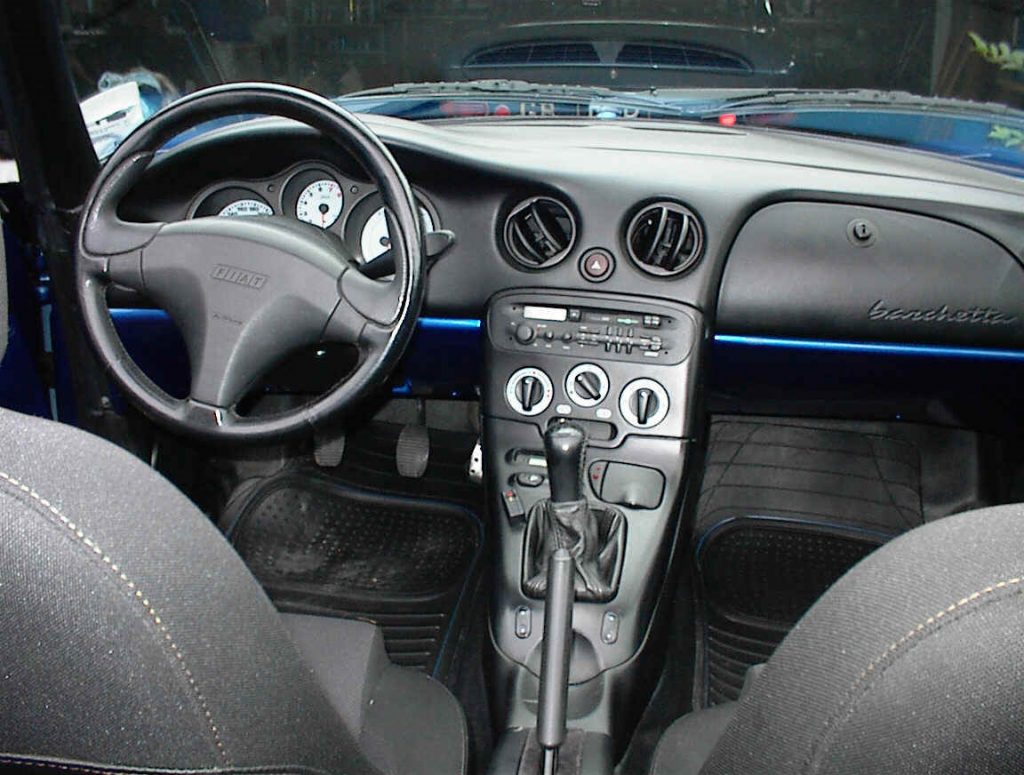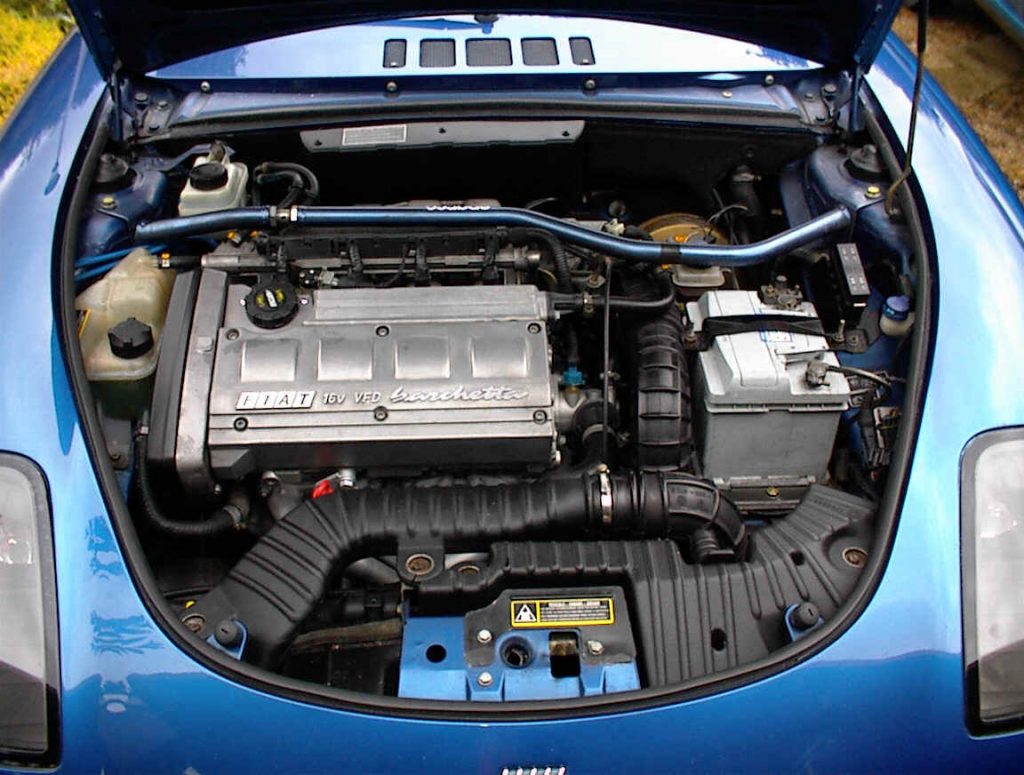By Ricky Reid
The barchetta, (literal translation meaning “little boat”) takes its name and some styling clues from Ferrari’s little 166 barchetta of the 1950’s.
It is a “no-nonsense” fun-car. It will never be (and wasn’t designed to be) in competition with Supercars by Lotus, TVR and the like. It is an affordable “it’s stopped raining get the hood down” driving experience that leaves an inane grin permanently fixed on your face. At the risk of upsetting 124 Spyder, X1/9 and Coupe fans, I think it’s the most beautiful car Fiat ever made and, provided it lives up to Fiat’s newly-acquired reputation of beating their old rust problems, I believe is a future classic in the making.
Built on the same chassis as the Punto (and sharing a lot of running gear with the same car), the barchetta was designed in-house by Fiat’s own styling house. The man commonly credited with being the leading light in its development is a Greek by the name of Andreas Zapatinas (had to mention this or else Theo Kyriacou, who just happens to look after this Website, would not have posted this article).
Design started back in1990 and it is interesting that Fiat made their own styling people compete with other Styling Houses for the job. Centro Stile’s design was the winner and was sufficiently advanced in 1992 for the decision to be made on the coachbuilders to construct this car. Maggiora were successful in their offer and, using a lot of “old fashioned” hand-forming techniques in the body, have built all barchettas in their Plant .
A good source of the development story of this car is available at http://fiatbarchetta.com/prototype/index.html
Being designed to suit the existing Punto platform obviously kept costs down. The barchetta under-prices both its MGF and Mazda rivals by several thousand pounds.
In common with a lot of its Fiat ancestors in the sports models, the barchetta comes only in left hand drive. Nobody I know has found this a problem. The car is small enough to make it easy to drive in this form in the UK.
A good 1996 car can now be found on the market for as little as £7,000.
The barchetta’s engine
The engine was developed by Fiat for use in the barchetta and other models (fitted to some Coupes for domestic tax reasons in Italy and now in some Puntos.) Based on the Bravo 5-cylinder unit, it is a 16 valve, 1.8 litre aluminium headed unit with Variable Timing technology and twin overhead camshafts developing 130 bhp at 6300 rpm and 121 lbft of torque at 4,300 rpm. It goes (and sounds) good albeit it is not without some niggles (see later section on Problems). The engine will rev sweetly to 7000 rpm (with “boost” coming in from the Variator around 3,500). At its limit of 7000 revs though it is interrupted abruptly by a cut-out mechanism. One day I’ll find out how to disable that gizmo.
Overall performance is adequate. 0-60 in something just over 8 seconds; top speed 124 mph.
Engine economy is good. Rarely do you drop below 30 mpg and on long Summer runs, 35-36 mpg is common.
Problems
The Variator is not all good news. Early problems came to light with Variators “sticking” and leading passers-by to confuse the barchetta with a diesel taxi! (Sticking Variators inevitably stick around 24 degrees advanced, which makes tick-over sound diabolical). Fiat recognised this problem and advised that all faulty Variators would be changed free of charge. That has, to a reasonable degree, been the case and I was eventually very satisfied with Fiat UK’s attention to my engine problems.
Other niggly problems do exist. The use of water-based “environmentally-friendly” paint means a lot of time being spent fixing stone-chips after Motorway runs (at least in England). But at the end of the day, maybe that is why we get hooked on Fiats; they certainly do demand their Owner’s intimate involvement.

![Fiat Motor Club [GB]](https://fiatmotorclubgb1.netfirms.com/wp-content/uploads/2017/11/Website-Header-v3.jpg)



